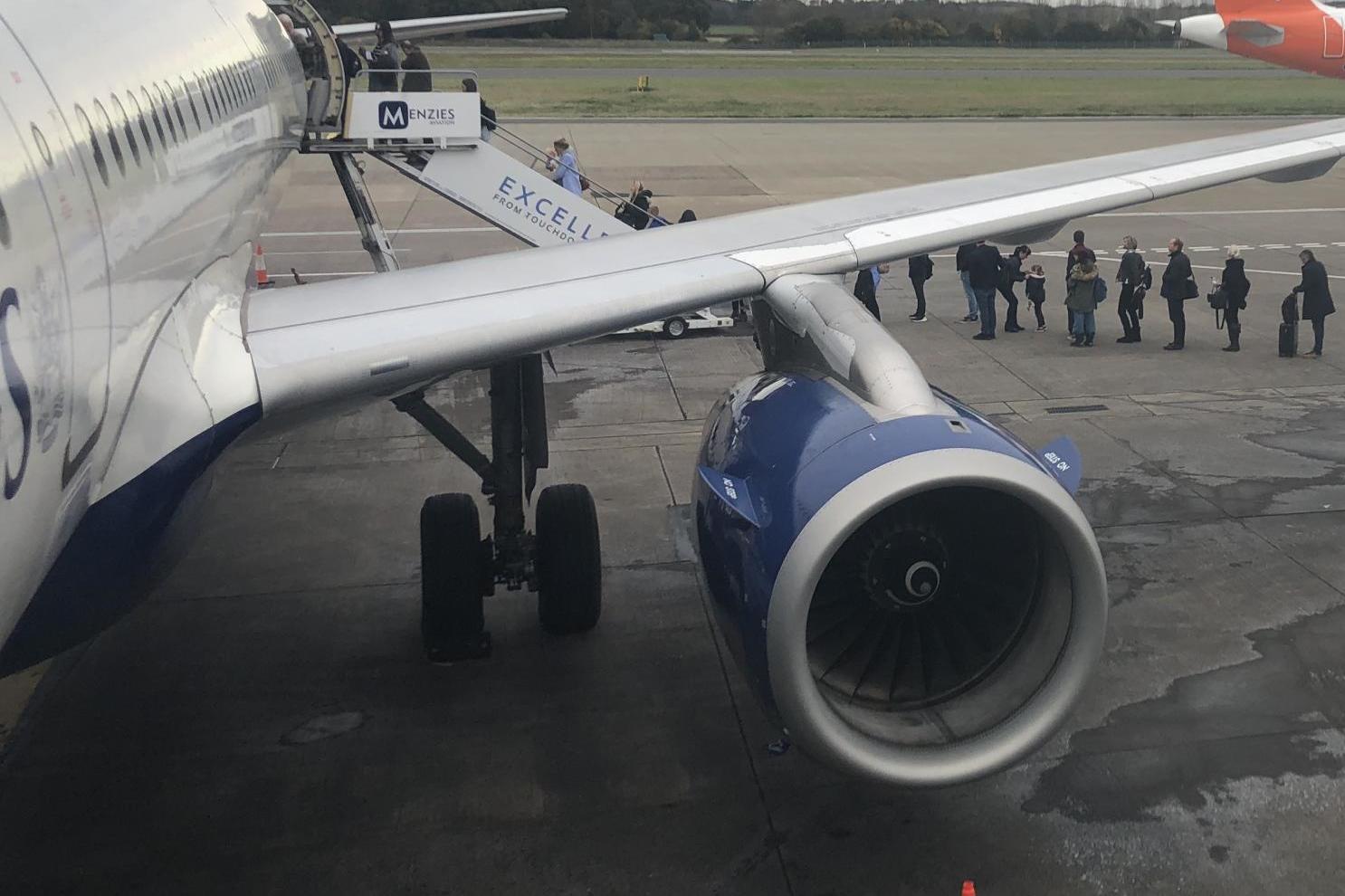How can passengers board planes quickly and efficiently?
Plane Talk: will Gatwick’s plans for ‘self-loading freight’ succeed?

Last weekend at Edinburgh, British Airways flight 1543 to Heathrow left a little late. The reason: gridlock. Not in the skies, nor on the apron of Scotland busiest airport, but inside the plane.
It was a long, thin Airbus A321. So to speed things up, the airline had a cunning plan: augment the normal airbridge boarding by attaching of steps to the rear of the aircraft. But the passengers had to self-select one or the other and commit to it while still inside the terminal, and predictably about half of them guessed wrong.
In the cabin, a stream of passengers going from front to back met an equal and opposite flow who had boarded at the rear and were intent on reaching their seats in the front.
Only with some gentle coercion and intricate shuffling around the galley and emergency exit was the deadlock eventually broken.
Each of the 17 minutes of the resulting delay cost BA money – from an £82 fee for overstaying the welcome at gate 6 to the risk of connections at Heathrow being expensively broken.
By Wednesday, Gatwick had unveiled a cunning plan that aims to speed up boarding. The UK’s second-busiest airport (after Heathrow) is conducting a two-month experiment to increase the efficiency of aircraft “turns”.
If you get passengers on the plane in the right order, the thinking goes, the process will be more efficient and more comfortable.
The evidence I have seen and the research I have read indicates that passengers prefer to board by “air bridges”, especially when the weather is vile. For short-haul planes like the Airbus A321 and Boeing 737 this means a single point of access to the plane.
So what is the “right order”? When the airline is using an airbridge with a single entrance to the aircraft, it is quite clear. Passengers should board from the back, but “outside in”: those with window seats first, then those in the middle, then people seated beside the aisle. All smooth and sensible.
In theory, it’s a win-win-win. No need for the pre-flight dance as already seated passengers stand up to allow you to squeeze in. Travellers’ stress is reduced, and they are more likely to enjoy a punctual departure.
With, say, a three-minute saving on each aircraft “turn”, Gatwick can get more use out of departure gates. And aircraft spend less time on the ground and more in the sky, increasing efficiency.
What could possibly go wrong?
Well, passengers are disparagingly known by aviation professionals as “self-loading freight”, and with good reason. Unlike a passive pallet of cargo, travellers do not always do as they are told.
The occupant of seat 27F may be dawdling in duty-free or downing a drink rather than obediently waiting at the gate for his or her appointed time to board. And frequent flyers with the platinum card to prove it will demand the right to board whenever they wish.
In the run-up to Christmas, when many families are travelling, the idea of a five-year-old being dispatched to find his or her window seat, with the parent held back at the gate until it is the turn of the “middles” is unrealistic, to put it mildly.
Shortly after the Gatwick announcement, I conducted an instant Twitter poll about whether the Gatwick scheme might work. In just one hour, 959 travellers kindly responded.
Those who chose “Yes, faster and calmer” were evenly matched with “No, it’ll never work”. But each scored only 26 per cent.
The remaining 47 per cent (yes, there’s a rounding error) took the third option I offered: “Crack down on cabin baggage.”
Most of the kerfuffle, they believe, is caused by the battle to cram everyone’s belongings into the overhead lockers. And they have a point. If the person now heading for seat 30E is impeded because Mr or Ms 10F is still struggling to cram in their slightly too-bulky bag, then all the algorithms in the world are not going to help.
Better to adopt the primitive but effective Ryanair approach: a set of steps and the front, another at the back, and a simple message to the passenger – front or back. Unlike my Edinburgh airport experience, if everyone is shivering outside they are keen to get it right.
Fiona Richman tweeted that incentivising passengers is the best way to load a plane in record time.
“We were once told we all had to be onboard and in the air in a matter of minutes,” she writes.
“Otherwise the destination airport would be shut for emergency runway repairs and we would be diverted. Worked a treat.”
Join our commenting forum
Join thought-provoking conversations, follow other Independent readers and see their replies
Comments